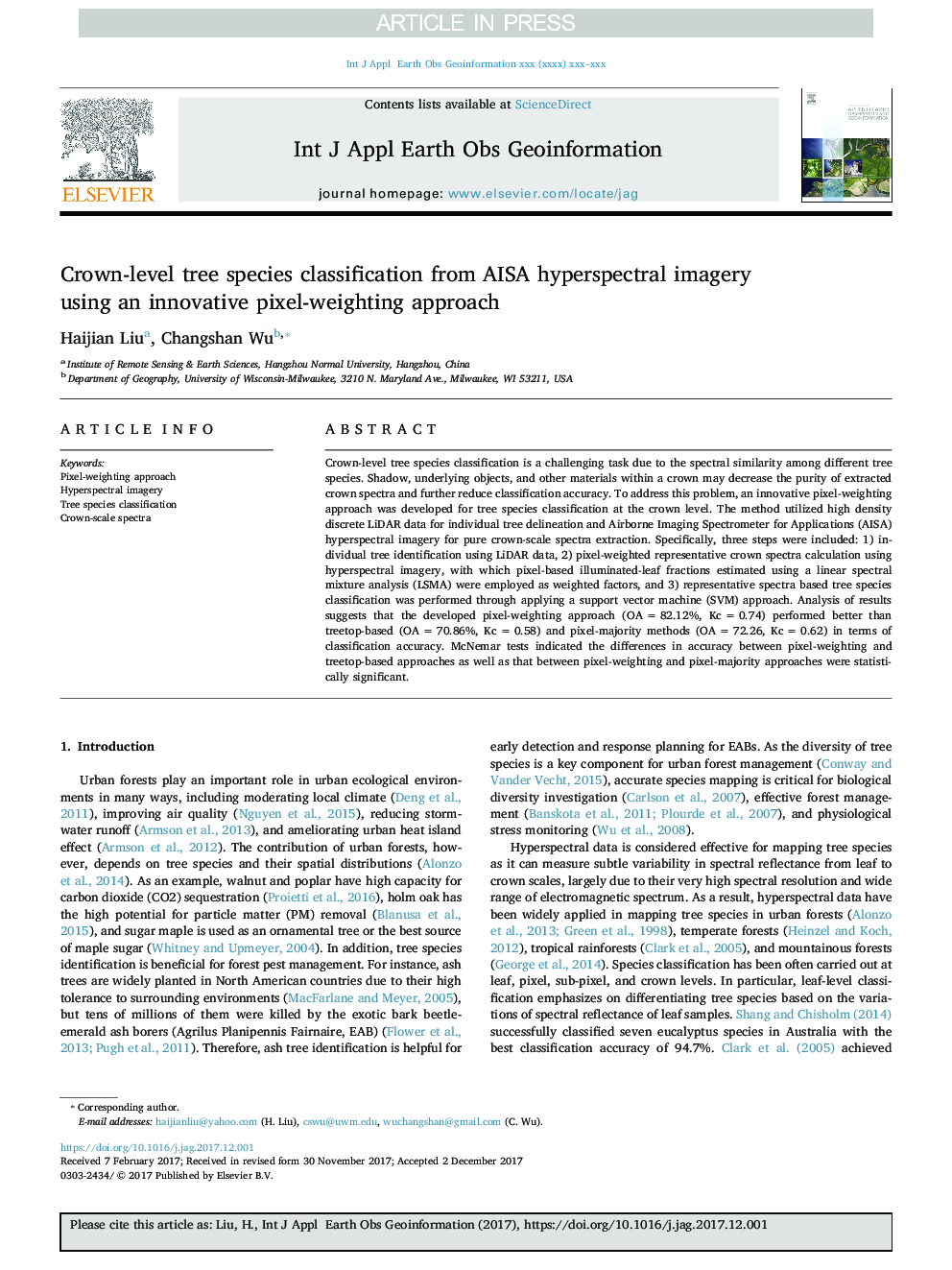| Article ID | Journal | Published Year | Pages | File Type |
|---|---|---|---|---|
| 8867994 | International Journal of Applied Earth Observation and Geoinformation | 2018 | 10 Pages |
Abstract
Crown-level tree species classification is a challenging task due to the spectral similarity among different tree species. Shadow, underlying objects, and other materials within a crown may decrease the purity of extracted crown spectra and further reduce classification accuracy. To address this problem, an innovative pixel-weighting approach was developed for tree species classification at the crown level. The method utilized high density discrete LiDAR data for individual tree delineation and Airborne Imaging Spectrometer for Applications (AISA) hyperspectral imagery for pure crown-scale spectra extraction. Specifically, three steps were included: 1) individual tree identification using LiDAR data, 2) pixel-weighted representative crown spectra calculation using hyperspectral imagery, with which pixel-based illuminated-leaf fractions estimated using a linear spectral mixture analysis (LSMA) were employed as weighted factors, and 3) representative spectra based tree species classification was performed through applying a support vector machine (SVM) approach. Analysis of results suggests that the developed pixel-weighting approach (OA = 82.12%, Kc = 0.74) performed better than treetop-based (OA = 70.86%, Kc = 0.58) and pixel-majority methods (OA = 72.26, Kc = 0.62) in terms of classification accuracy. McNemar tests indicated the differences in accuracy between pixel-weighting and treetop-based approaches as well as that between pixel-weighting and pixel-majority approaches were statistically significant.
Related Topics
Physical Sciences and Engineering
Earth and Planetary Sciences
Computers in Earth Sciences
Authors
Haijian Liu, Changshan Wu,
